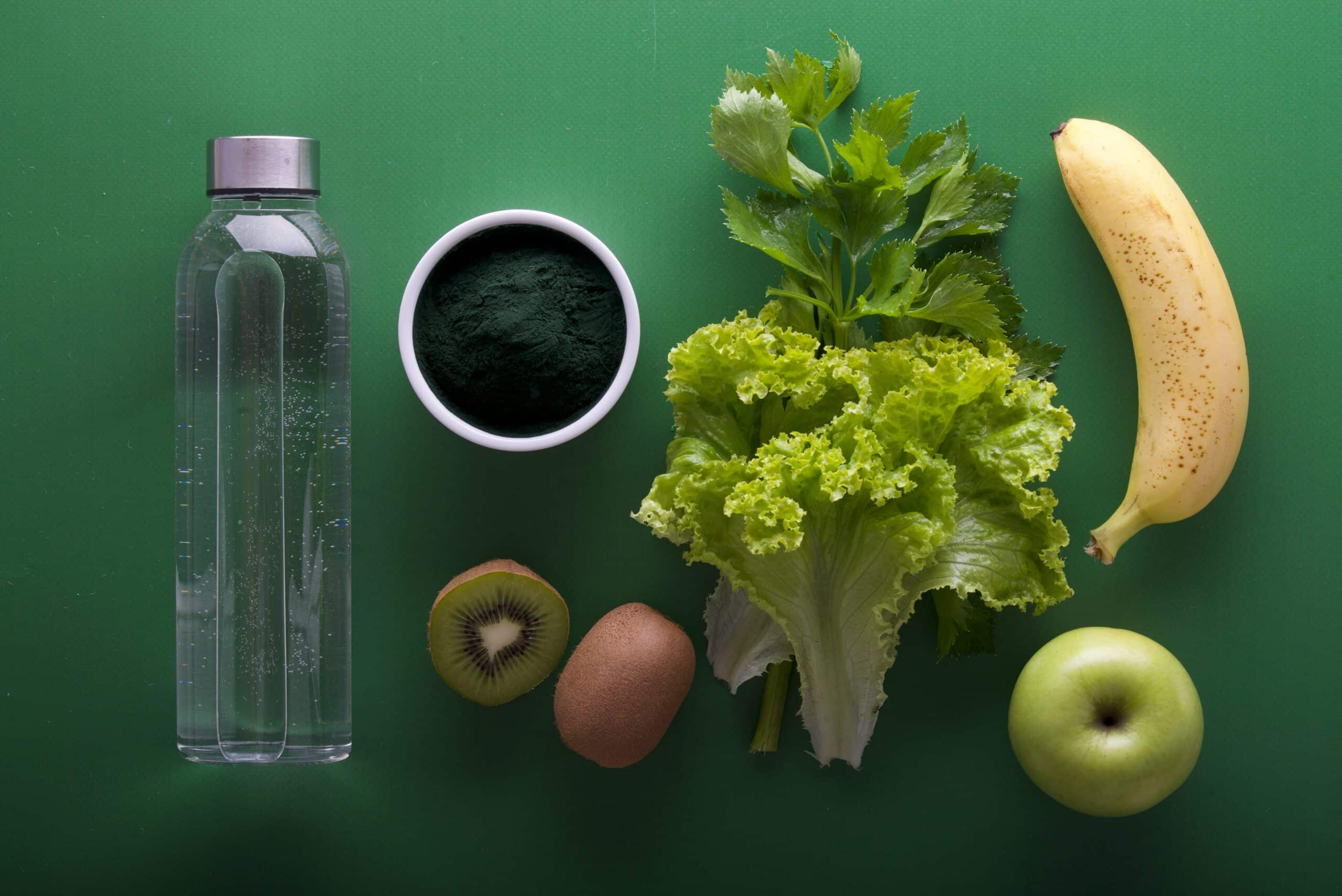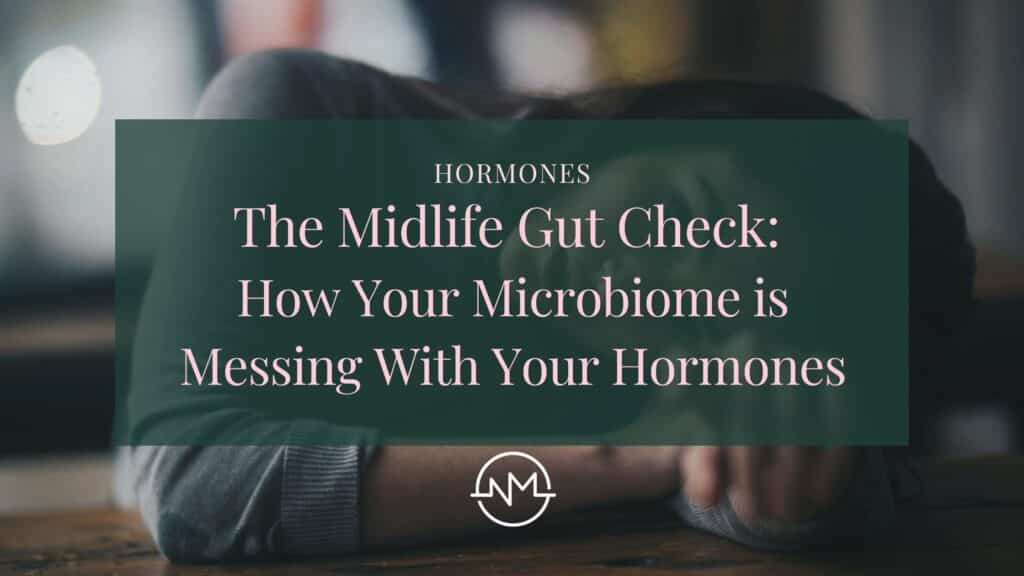It’s no secret that hormones go haywire in the lead-up to menopause. But what most women (and even many health professionals) don’t realise is just how much your gut microbiome controls those hormones — especially estrogen.
And this isn’t just about digestion. This is about a specific group of bacteria with a very important job: managing how much estrogen is circulating in your body.
This microscopic team has a name: the estrobolome.
Let’s dive into what it is, how it works, and why it might be making your perimenopause symptoms worse.
What Is the Estrobolome?

The estrobolome is the collection of gut bacteria that produces an enzyme called beta-glucuronidase. This enzyme plays a key role in determining how estrogen is processed, recycled, and cleared from your body.
Here’s how it works:
-
Your body produces estrogen (from your ovaries, fat cells, and even your adrenals).
-
After it does its job, it gets detoxified in the liver, where it’s conjugated (bound) and sent into the gut to be excreted.
-
If your estrobolome is healthy, it helps maintain balance — recycling just enough estrogen to keep levels stable.
-
But if your estrobolome is imbalanced (often due to dysbiosis or inflammation), beta-glucuronidase activity goes into overdrive.
-
That means too much estrogen gets reabsorbed into the bloodstream instead of being eliminated.
This is called estrogen re-circulation, and it’s a major contributor to estrogen dominance — one of the most common hormone imbalances during perimenopause.
Estrogen Dominance in Perimenopause: A Quick Refresher
In perimenopause, progesterone is the first hormone to drop, not estrogen. That means many women end up in a state of relative estrogen dominance, even if their absolute estrogen levels are declining.
Symptoms of estrogen dominance include:
-
Breast tenderness
-
Bloating and fluid retention
-
Heavy or painful periods
-
Mood swings or irritability
-
Brain fog
-
Trouble sleeping
-
Increased anxiety or panic
Now, combine that with poor estrogen clearance from the gut, and you’ve got the perfect hormonal storm.
How Your Gut Impacts Hormone Detox

We tend to think of the liver as the main detox organ for hormones, but it doesn’t work alone.
After the liver processes estrogen (via phase I and phase II detox pathways), it sends it to the intestines for elimination through the stool. That’s where your gut bacteria come in.
If your digestion is sluggish, your microbiome is inflamed, or you’re constipated, your body has a harder time clearing those excess hormones. Worse — if you have high beta-glucuronidase activity, estrogen that was meant to leave the body gets unbound and reabsorbed.
This leads to what we call estrogen recirculation — and it’s a huge driver of perimenopausal chaos.
Signs Your Estrobolome Is Out of Balance
While there’s no single test for the estrobolome (yet), there are some red flags that suggest your gut isn’t clearing estrogen properly:
-
Bloating after meals
-
Constipation (less than 1 full bowel motion a day)
-
History of antibiotic use or gut infections
-
Sugar cravings
-
Skin issues (especially around the chin or jaw)
-
Sensitivity to hormonal contraceptives or HRT
-
Worsening PMS or perimenopausal symptoms
If this sounds like you — don’t panic. There’s a lot you can do to restore your estrobolome naturally.
What Can You Do About It?
Let’s talk diet and lifestyle strategies that actually work.
1. Feed Your Microbiome the Right Way
Your gut bacteria need prebiotic fibre to thrive. Some notable sources of prebiotic fibre include:
-
Ground flaxseed
-
Steamed cruciferous veggies (broccoli, cauliflower, cabbage)
-
Garlic, onion, leeks, asparagus
-
Oats, lentils, and resistant starches like cooked-and-cooled potato
These support microbial diversity and fuel good bacteria — including those that balance beta-glucuronidase levels.
Cruciferous veggies are rich in glucosinolates, which help the liver metabolise estrogen more efficiently.
2. Avoid Excess Sugar and Alcohol
Both of these feed the wrong kind of gut bacteria — the ones that promote inflammation and beta-glucuronidase overactivity.
Alcohol also slows down liver detox pathways and contributes to leaky gut, which can worsen hormonal symptoms and increase circulating endotoxins (which drive inflammation).
3. Focus on Daily Elimination
You need to be pooping well to clear out those detoxified estrogens.
-
Aim for at least one full, easy bowel motion per day
-
Stay hydrated
4. Move Your Body, Lower Your Stress
Stress affects both the gut and hormones — cortisol dysregulation slows digestion, increases inflammation, and steals from your sex hormones (a concept known as the pregnenolone steal).
Gentle movement like walking, Pilates, breathwork, or yoga can support motility, stress resilience, and detox pathways.
Can You Test the Estrobolome?

While the estrobolome itself isn’t widely available on standard gut tests, you can test for:
-
Beta-glucuronidase activity (via comprehensive stool analysis)
-
Oestrogen metabolites (via DUTCH testing)
-
Microbial diversity and pathogens (via complete microbiome mapping)
Our practitioners can put these pieces together to get a full picture of how your body is metabolising estrogen.
Final Thoughts
Perimenopause isn’t just about your ovaries — it’s about your whole ecosystem. If your gut isn’t functioning optimally, your hormones don’t stand a chance.
The estrobolome may be microscopic, but its impact is massive. Often, the key lies in supporting your microbiome, eating for your liver, and giving your gut what it needs to do its job.
Your body is trying to find balance — not betray you. And with the right support, this transition can feel like a powerful evolution instead of a breakdown.

